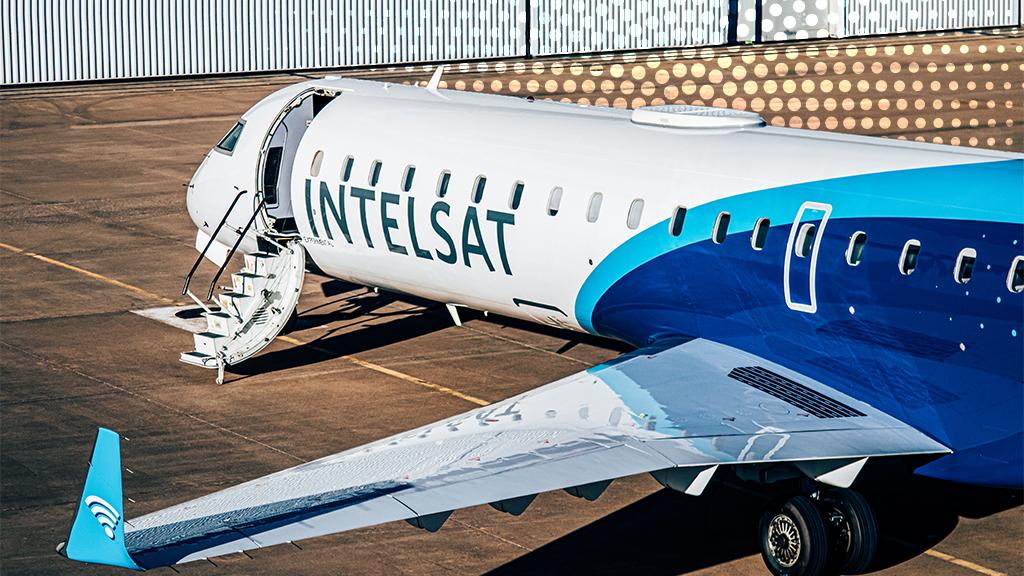The Future Of Inflight Connectivity


Blane Boynton, Intelsat's VP Product Development, discusses how new connectivity technology will improve the passenger experience and airline operations.
How popular is inflight connectivity (IFC) and which airlines tend to offer it?
More than a third of the global commercial aircraft fleet now has passenger connectivity, as well as almost every major airline. U.S. and European carriers have led installations of IFC solutions thus far, and most domestic airlines in the USA now seek to attract customers with either sponsored, free, or other types of connectivity offerings.
The use of passenger connectivity is most intense on daytime business routes within the USA and Europe, followed by international business flights. In contrast, IFC penetration is weakest on leisure and overnight long-haul widebody routes, partly due to gaps in coverage – although new satellite and antenna technology will remedy this.
How far has IFC technology advanced in recent years?
The big change over the last five years has been the shift from air-to-ground IFC technology, which relies on aircraft antennas picking up signals from land-based transmitters, to satellite-based installations.
At the same time, antenna technology has leapt ahead to exploit different types of satellite coverage. The latest technology also offers airlines weight, drag, and fuel efficiencies over older, gimballed panel antennas and the mechanically steered arrays that preceded it. Intelsat’s new Electronically Steered Array (ESA) antenna, for example, is built solely from microchips, has no moving parts and stands just three inches proud of the fuselage – half as high as predecessor systems.
ESAs can speak to geostationary (GEO) satellites, those in Medium-Earth Orbit (MEO), and the emerging networks of Low-Earth Orbit (LEO) satellites from companies like OneWeb and Starlink. This eliminates any gaps in coverage, with the antenna able to switch quickly between one orbit and another.
And what will this mean for the passenger experience?
Most IFC antennas in operation today cannot speak to LEO constellations. Their signals take longer to travel between higher-orbit satellites than they do to and from ground-based transmitters, which increases latency. New LEO-capable antennas close this latency gap, meaning snappier social media scrolling and website loading for passengers on ESA-equipped aircraft.
The next step will be multi-beam antennas that communicate with different satellite orbits at the same time. Entering service from around 2027 these new ESA antennas will offer a blended customer experience, with latency-sensitive tasks routed through LEO or MEO and less sensitive actions, like video streaming, pushed up to GEO connections.
Will airlines be exposed to endless rounds of retrofits to keep their IFC technology up to date?
Another advantage of ESAs is their modular nature, meaning they can be snapped together to form apertures of different sizes and with different characteristics. After installation, therefore, any upgrades can be performed by adjusting the aperture rather than replacing whole systems.
Also, existing systems such as the Intelsat 2Ku mechanically steered array installed across 1,500 aircraft, still offer great efficiency and throughput, making them ideal for high-density routes operated by large aircraft.
The reality is that IFC antennas are improving faster than they did in the past.
How long do IFC retrofits take and how future-proof are they?
To guarantee the best customer experience Intelsat installs its own antenna, modem, router, software, and other connectivity equipment. The full installation takes an aircraft out of service for three to five days but should – for the latest systems – give airlines roughly 10 years before further big retrofits are needed. IFC solution providers like Intelsat work closely with airlines to coordinate these installation and upgrade activities in parallel with other scheduled maintenance, reducing overall aircraft out-of-service impacts.
For airlines with legacy IFC systems, how will an upgrade provide a return on investment?
Aside from their fuel-efficiency benefits, ESA antennas also offer maintenance costs savings.
More importantly, as IFC becomes more ubiquitous, net passenger satisfaction is increasingly linked to the quality of onboard Wi-Fi, with some passengers even choosing an airline based on its IFC capabilities. In the past, these were mainly business customers, but leisure customers increasingly want to stay connected, too, with IFC use and data loads increasing steadily since the end of the pandemic.
This means that good Wi-Fi can drive brand loyalty, marketing opportunities and partnerships. Examples include integration with frequent flyer programs to reward loyal customers, or synergistic deals with telecoms providers, which sponsor free inflight Wi-Fi for their customers, a model that results in some of the highest take-up rates.




